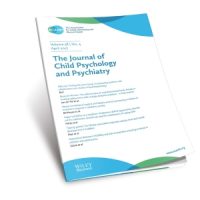Anatomy
-

Cognitive flexibility in OCD: challenging the paradigm
Data from a new study by Nicole Wolff and colleagues suggest that cognitive flexibility can be better in children with obsessive-compulsive disorder (OCD) than typically developing controls.
Read more -

Cortical thickness can differentiate conduct disorder subtypes
A study by Graeme Fairchild and colleagues has used a neuroimaging approach to compare the structural organization (or “covariance”) of brain regions between youths with different subtypes of conduct disorder (CD) and healthy controls (HC).
Read more -

JCPP Editorial: Volume 60, Issue 03, March 2019
“Can dysregulated myelination be linked to ADHD pathogenesis and persistence?” by Klaus-Peter Lesch
Read more -

Most Cited JCPP Articles #25 of 60
Most cited JCPP papers #25 of 60: The neural correlates of attention deficit hyperactivity disorder: an ALE meta-analysis
Read more -

Most Cited JCPP Articles #41 of 60
Most cited JCPP papers #41 of 60: Annotation: The role of prefrontal deficits, low autonomic arousal, and early health factors in the development of antisocial and aggressive behavior in children
Read more -

Accelerated cortical thinning correlates with early signs of depression
The brain undergoes structural changes as it develops over childhood, but whether abnormal structural changes are associated with emerging depressive symptoms in adolescence is unknown. Now, a longitudinal study that enrolled 205 participants aged 8-25 years without signs of depression has used magnetic resonance imaging (MRI) to monitor these brain changes over adolescence.
Read more -

JCPP Editorial: Volume 58, Issue 02, February 2017
“Developmental psychopathology in the post-genomics era – substantial challenges but reasons for hope” by Jeffrey M. Halperin
Read more -

Annual Research Review: On the developmental neuropsychology of substance use disorders
The researchers identify certain neurocognitive and personality/comorbidity-based risk factors for the onset of substance misuse during adolescence, and summarise the evidence suggesting that these risk factors may be further impacted by the direct effect of drugs on the underlying neural circuits implicated in substance misuse vulnerability.
Read more